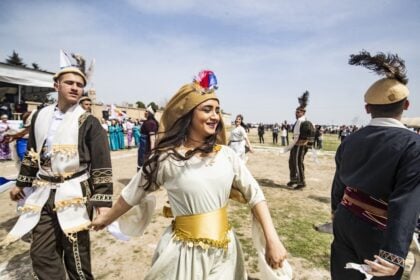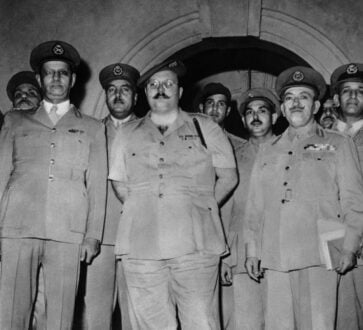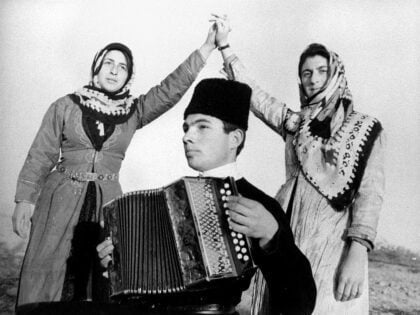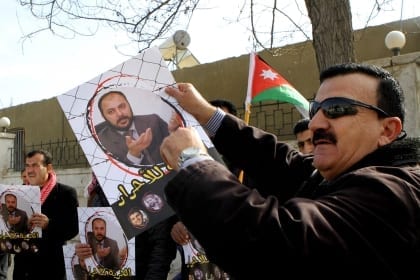
Introduction
According to United Nations estimates, Syria’s population reached 17.501 million in 2020 AD, with a gender ratio of 102 males for every 100 females.
According to the last geographical survey of the country, the Central Bureau of Statistics estimated the number of residents who were present on the Syrian territory in mid-2018 at about 25.021 million, distributed between the sexes by 51% males, 49% females, and a gender ratio of 104 males for every 100 females. The country’s population growth rate was estimated at 2.45% compared to 2017 when the population reached 24.422 million.
The Syrian government lacks regional control over much of the country’s northeastern part, which the Kurdish-majority Syrian Democratic Forces dominate. The Syrian Democratic Forces had expanded their territorial control over a large part of the northeast since 2014 when they seized lands from the Islamic State in Iraq and Syria (ISIS).
Since 2016, Turkey has seized lands along the northern borders of Syria in Aleppo, Raqqa, and Hasaka. According to United Nations estimates, in April 2016, the number of deaths among the Syrian government forces, opposition forces, and civilians reached more than 400,000. However, other estimates put the number more than 500,000.
Since the outbreak of the Syrian crisis in 2011, the country has witnessed an increase in refugees’ number. Approximately 6 million Syrians were internally displaced only. The number of registered refugees outside the country reached about 5.56 million registered refugees, according to the statistics of the United Nations High Commissioner for Refugees (UNHCR) on January 30, 2020. The largest number of them are concentrated in Turkey, with a total of 3.58 million refugees. Simultaneously, the number in Lebanon reached 915 thousand refugees, about 655 thousand in Jordan, 246 thousand in Iraq, and 129 thousand refugees in Egypt. The conflict in Syria remains one of the largest humanitarian crises around the world.
According to the Observer newspaper, in the first quarter of 2021 AD, the Syrian refugees lost their only refuge without a prior entry visa when the Sudanese government canceled Syrians’ exemption from entry visas to the country. Reviewing all the nationalities granted to foreigners – including Syrians – over the past two decades; This left thousands of Syrians stranded inside and outside Sudan.
According to the Observer report, the Sudanese authorities stripped many Syrians of their Syrian nationality after they launched a campaign where they canceled 3,500 passports they said were obtained illegally.

Arabic is the country’s official language, along with other languages spoken, such as Kurdish, Turkmen, and Armenian. Arabs constitute between 90-95% of the total population and the Kurds between 5-10%.
Muslims made up about 87% (Sunni includes 74%, Shiites 13%), Christianity 10% (includes Orthodoxy, Papacy, and Nestorianism) and Druze 3%, Judaism (a few remaining in Damascus and Aleppo).
Age Groups
Estimates of the age structure of the population in Syria in 2020 AD, according to the CIA World Factbook, indicate that 33.47% of the population are under the age of 15 and that 19.34% fall in the 15-24 age group, 37.31% fall In the closed category of 25-54 years, while 5.41% in the age group 55-64 years old, and the percentage of those 65 years and over, their percentage reached 4.46% of the total population of the country.
The total fertility rate was 2.85 live births per woman in the 15-49 age group, and the average life expectancy rate was 74.01 years (72.54 for males, 75.57 for females).
Areas of Habitation
More than half of the population lives in the coastal plain, the Aleppo governorate, and the Euphrates Valley, with a large population density along the Mediterranean coast; It is doubtful that there are larger population concentrations in the main cities of Damascus, Aleppo (the largest city in the country), and Homs.
The United Nations estimates the country’s population density for 2020 at 95.3 individuals per km2, and Damascus accounts for about 2.35 million people.
According to the Central Bureau of Statistics, the Population Status Assessment Survey 2014, which took into account the rate of internal displacement, indicated that Aleppo governorate acquired 20.4% of the total population of the country, while the Damascus countryside governorate accounted for 15.2%, followed by Hama governorate with an acquisition rate of 9.5%. Damascus is 8.8%. Then the governorates of Homs, Latakia, and Idlib, respectively, in terms of population.

Ethnic and Religious Groups
Muslims make up about 87% (Sunni includes 74%, Shiites 13%), Christianity 10% (includes Orthodoxy, Papacy, and Nestorianism) and Druze 3%, Judaism (a few remaining in Damascus and Aleppo).
In the twenty-first century, 87% of Syrians belong to Islam. Sunni Muslims are the largest group by far, with an estimated 74% of the population (the CIA) and about 80% of Muslims. Alawites come second (10%). From a religious point of view, they are followers of the dissident Shiite imam Muhammad bin Nusayr al-Namri (ninth century), known as Nasiriyah.
The term “Alawites” (although its origin is uncertain, it is said to refer to Imam Ali, son-in-law and cousin of the Prophet Muhammad) was said to have been promoted by the French mandate authority, which was heavily supportive of the Alawite minority. Alawites prefer to use this appellation rather than “Nusayriya.” Alawites lived mainly in the northwest of the country, in and around Jabal Al-Alawi or Al-Ansariyah, as a rural community.
They were extremely poor and viewed as second-class citizens and subsisted on herding goats. They are credited with their social ascendancy to the army and, in the end, their participation in the military coups that rocked the country between 1949 and 1970 and their acquisition of the Baath Party, which has been entrenched in power since 1963. The “ruling” Assad family also belongs to the Alawite sect.
As a result of the internal migration movement, it is impossible to limit a specific geographical area to a separate ethnic or religious category. Rather, it is possible to speak of a general Sunni majority concentrated in the main governorates: Damascus, Homs, Hama, Aleppo, Raqqa, and Daraa.
Whereas, Muslims of the Alawite sect – which follow the Twelver Shiite Jaafari sect – are concentrated in the Syrian coast villages and some areas of the interior and near the interior. As for the Druze, they have the highest density in the southern region of the mountain in the Sweida governorate and the presence of more than 40,000 Druze in the occupied Golan Heights.
Christians are spread all over the country. In some cities, they are concentrated in certain neighborhoods, or entire villages, regarding different ethnicities such as Assyrians, Chaldeans, Syriacs, Armenians, and Arameans.
Circassians are concentrated in Damascus, while Armenians are concentrated primarily in Aleppo, Latakia countryside, and Qamishli in the northeast of the country.
As for the Kurds – whose number is estimated at more than a million Kurds, they are concentrated in the northeastern regions, especially the governorates of Hasaka, Qamishli, and the north, in the countryside of Aleppo close to the border with Turkey, as for Deir Ezzor, the city of Albu Kamal, and the villages near the border with Iraq, most of them are Sunni Arabs. (For more information on the Kurds, visit our file on the Kurds).
As for the Turkmen in Syria – Sunni Muslims – there are no accurate statistics, but some sources suggested that their percentage was 3% of the total population.
The Turkmen of Syria are distributed in Syria between villages and cities. Their most important communities are Aleppo, Damascus, Latakia, and Homs, a door called Bab al-Turkman. In Damascus, there is the Saruja neighborhood named after the Turkish Mamluk leader Sarim al-Din Saroja. In Aleppo, Turkmen are concentrated in the northern villages of the city of Aleppo.
Latest Articles
Below are the latest articles by acclaimed journalists and academics concerning the topic ‘Population’ and ‘Syria’. These articles are posted in this country file or elsewhere on our website:














